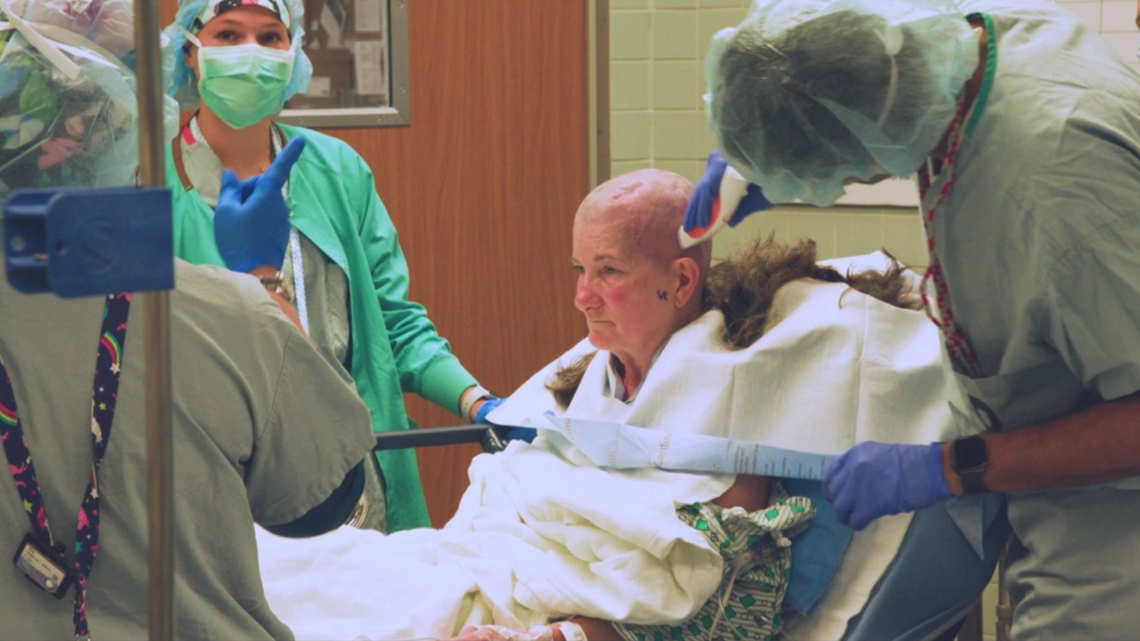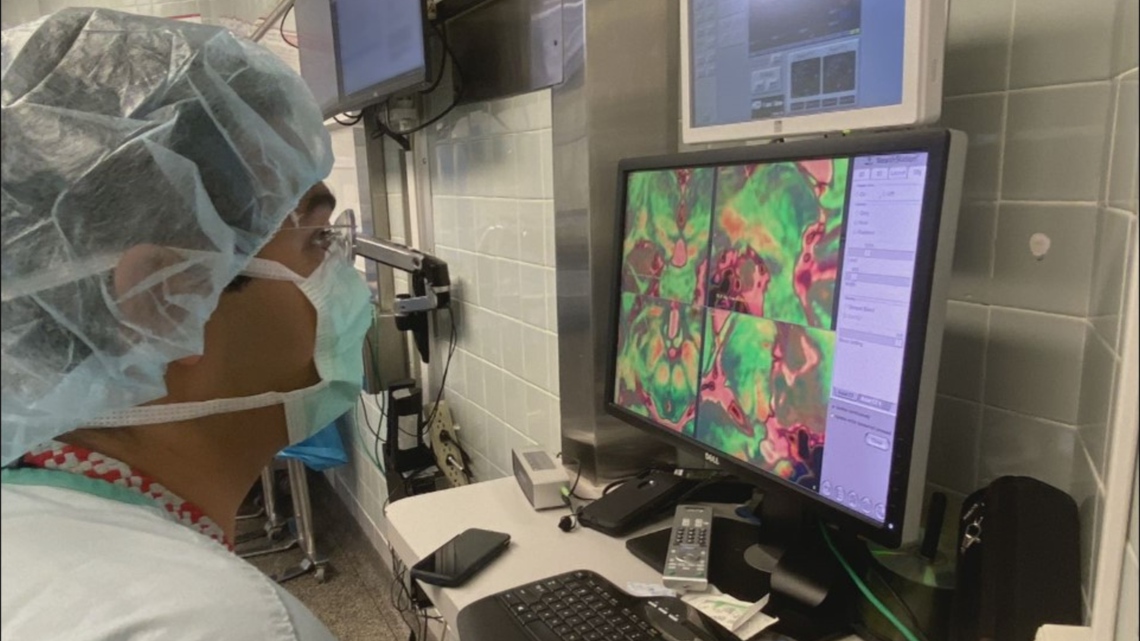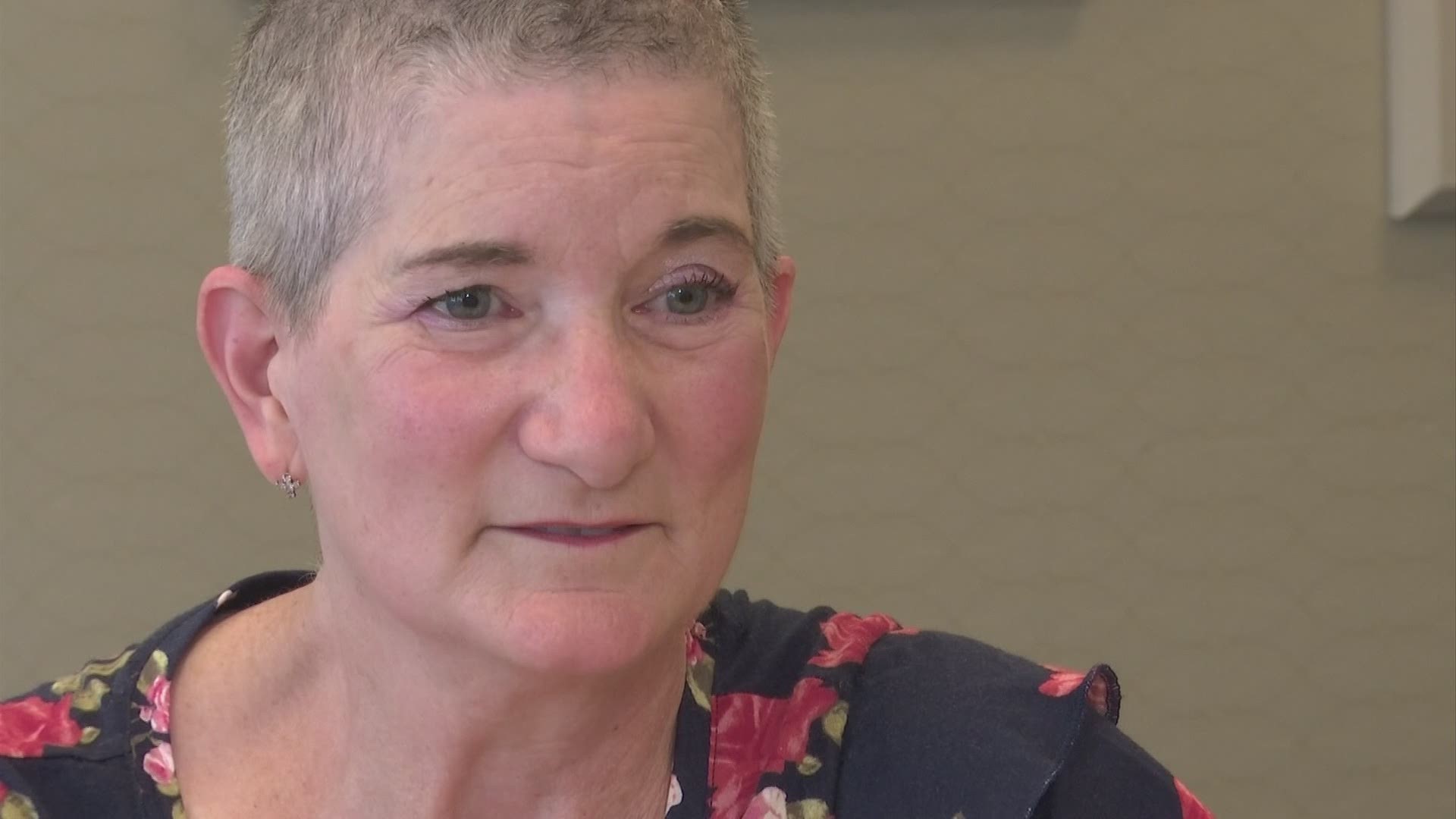A Portsmouth woman battling Parkinson's disease is now experiencing life without tremors thanks to new technology.
The Ohio State University Wexner Medical Center and its Neurological Institute are among the first in the nation to implant a new deep-brain stimulation (DBS) device.
Klaire Purtee, 62, is the first patient in Ohio to have this device implanted and programmed. The retired elementary teacher and current adjunct English instructor now joins more than 160,000 patients worldwide who have undergone DBS.
"It was in 2016 when I was diagnosed. It started out where my hand was shaking on the steering wheel and my daughter pointed it out," Purtee said. "It was affecting my quality of life. The tremors were getting so bad that I had to do something about it. So, I just decided to go for it. I didn't have any fear at all. I don't know why. The Lord I guess came down from above and watched over me."


Dr. Barbara Changizi, a neurologist at OSU Wexner Medical Center, explained DBS devices act as a pacemaker for the brain.
"This is very similar except the wires are going under the skin and neck through a hole in the skull to stimulate the brain," she said. "So, they are pacing the brain to have more normal electrical activity and the Parkinson's symptoms are suppressed."
While DBS technology has been used for years, the SenSight DBS Directional Lead System by Medtronic combines both sensing and directional technology. Doctors at OSU have called this a "major milestone" in the treatment of Parkinson's.
"People with Parkinson's can look almost normal with this stimulation technique. It has utterly changed our capacity to help patients," Changizi said. "Instead of just a big ball of electrical activity, which was still pretty cool, I can direct it this way or direct it that way. So, if there is a structure over here that is causing your face to contract when it gets stimulated or causing some unpleasant tingling sensation in your arm, I can avoid that area of the brain, shoot the electrical activity right over here where it needs to get to the Parkinson's structure and just curb the symptoms of Parkinson's without having any spread to areas that are more problematic or cause side effects."


Purtee had her device programmed on Tuesday. Minutes later, her tremors stopped.
"It was instant. It was," she said. "When I have Parkinson's and I have the tremors, every day it's a reminder that I have Parkinson's, but when the tremors go away, I forget I have it. And there's something to be said for denial."
Purtee said she is looking forward to being able to drink a cup of coffee without spilling, write a letter without shaking, and care for her kids and grandkids.
"It's not a death sentence. I found that out when I came to OSU and then I was a lot more hopeful," she said. "I really feel lucky, I do, that I have Parkinson's instead of something else much worse. Even losing my hair, it's not losing it to cancer or something. I feel like if I'm going to have something, Parkinson's would be it."


Purtee will come back for doctor visits periodically so they can adjust her device.
"I tell patients they have become bionic. They have a Ferrari sitting in their head. So, just like you maintain a very expensive vehicle, you've got to work that bionic brain and make sure everything is working well," Changizi said.
To read more about the technology, click here.

